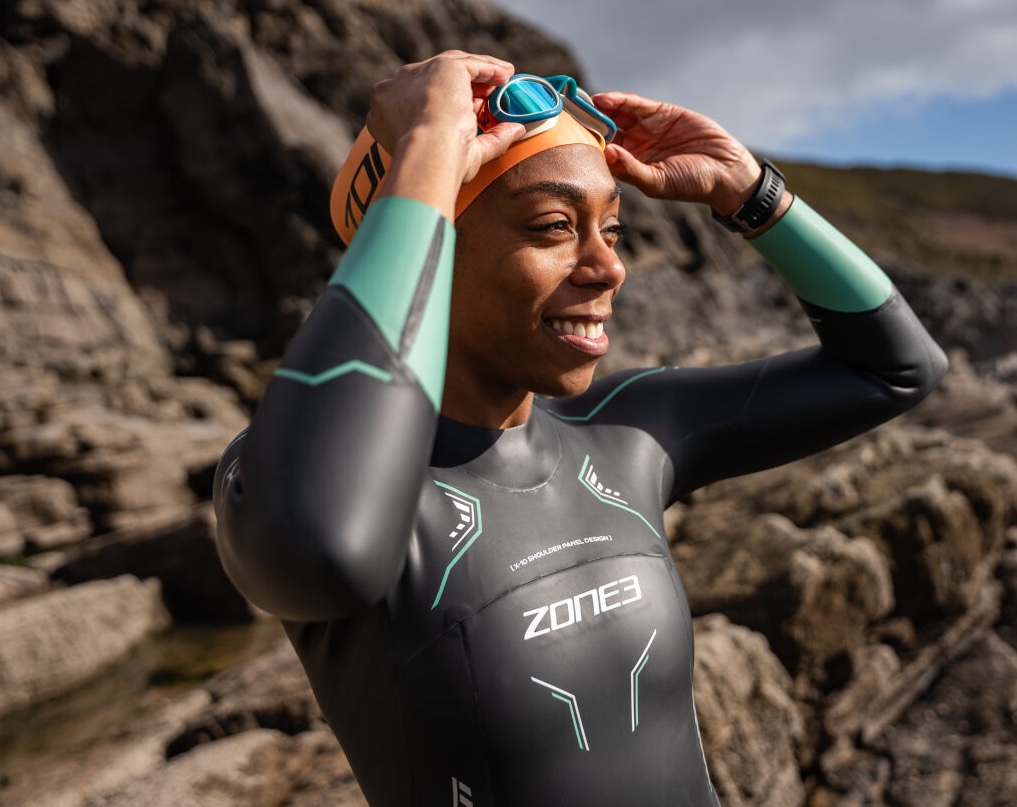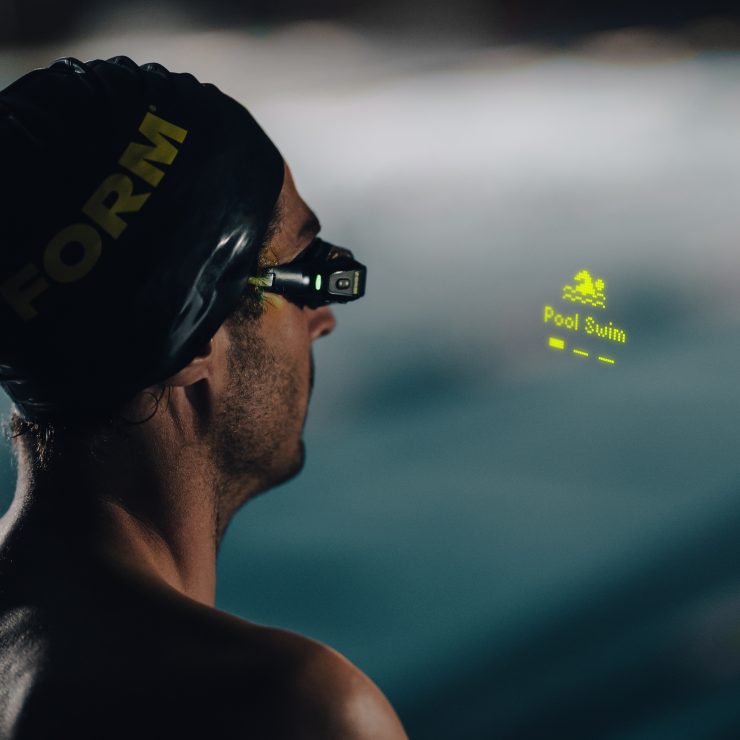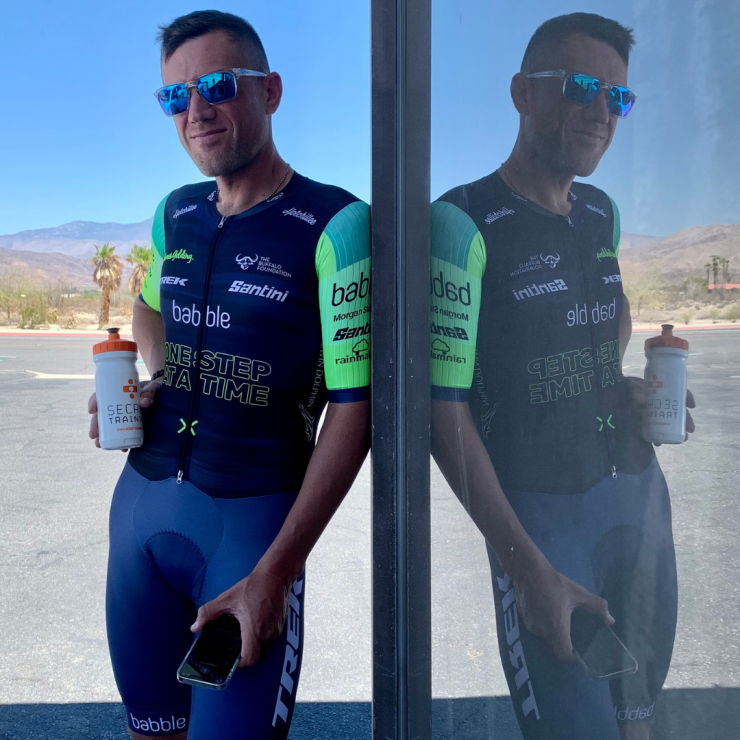ZONE3 leads the way in sustainable innovation with the unveiling of the world’s first biodegradable performance-focused wetsuit – the ZONE3 Vision.
Date, 28 Feb 2024: ZONE3 proudly announces the launch of the world’s first biodegradable performance-focused wetsuit, the latest iteration of the ZONE3 Vision, where innovation and performance meets sustainability.
The game-changing Vision wetsuit takes ZONE3’s award-winning wetsuit to new heights, with the new model using biodegradable rubber – Terraprene. The latest creation from cutting-edge neoprene specialists, Yamamoto, the Terraprene material preserves high quality and performance that ZONE3 wetsuits are renowned for, while being able to biodegrade entirely in landfill conditions.
The new ZONE3 Vision is not like other wetsuits. Once the wetsuit reaches the end of its swim adventure lifecycle, the Terraprene material can decompose completely in landfill conditions. Testing shows that the material will be nearly a third decomposed within just 2 years, compared to traditional neoprene which is non-biodegradable and can remain in landfill for over 100 years. The material continues to break down until full decomposition, yet doesn’t experience any decomposition during normal swimming or storage. The ZONE3 Vision offers a huge leap forward and ZONE3 are committed to their continued improvement in the sustainable performance of their products.
Users of the ZONE3 Vision will also have the option to return the suit to ZONE3 at the end of it’s life, where the lining and zips will be stripped and recycled, before sending the Terrapene material to landfill to biodegrade.
Samuel Westlake, Product Designer for ZONE3, said “As recipients of the Queens Award for Enterprise and Innovation, ZONE3 have always been at the forefront of product development. With this launch we aim to bridge the gap between offering a sustainable product alongside ZONE3’s passion for performance products. While the new Terraprene Vision wetsuit may just seem like the next step in the innovative sustainability roadmap for ZONE3, it is the first performance wetsuit on the market with improved sustainability credentials. The wetsuit truly is a world first and a great leap forward in making the sport of triathlon more sustainable.“
Part of a wave in sustainable product development, the ZONE3 Vision joins a range of products aiming to protect the planet and our oceans through more sustainable manufacturing. The Terraprene Vision joins the ZONE3 RENEW Open Water swimwear (made from recycled bottles), and the ZONE3 YULEX range of open water swimwear and accessories made from a plant-based alternative to neoprene as part of ZONE3’s commitment to protect the oceans for future generations.
ZONE3 have continued to update and adapt and update their popular products, including the 100% Recycled Heat Tech Change Robe and Recycled Buoys and Tow floats, to help play their part in ensuring everyone can enjoy our planets natural environments and waterways for generations to come.
The ZONE3 Vision will be available from February 28th with an RRP of £399.
For the full ZONE3 sustainable range, visit: https://zone3.com/collections/sustainable-products
For press enquiries or any further information supporting the sustainability-related statements above please contact:
Sam Begg @ Aspire PR
sam@aspirepr.co.uk
07860568812
Frequently asked questions
What is Terraprene and what does it decompose into?
Terraprene is a synthetic rubber with similar properties to performance neoprene, but is produced from renewable feedstocks and is 100% biodegradable rubber. It uses limestone rock (calcium carbonate) as the key ingredient to replace the main petrochemical inputs to make polychoroprene (neoprene). In landfill conditions, it breaks down into methane and biomass, like other organic materials in landfill. There’s no micro-plastics to worry about.
How do traditional neoprene wetsuits degrade?
Traditional neoprene is a synthetic rubber, made from petrochemicals, with great performance in wetsuits. However, it is highly resistant to a broad range of environmental conditions, but it is non-biodegradable and will last 100+ years in landfill, stiffening and then breaking down chemically into smaller particles over long periods of time.
Under what conditions does the Terraprene material biodegrade, and how long does it take?
Correct heat, moisture and pressure found in landfill conditions, as tested to ASTM 5511 Standard. The ASTM 5511 assessment determines the rate and degree of anaerobic biodegradation of plastic materials in high-solids anaerobic conditions – a lab-proxy for best-case conditions found in landfill. The Terraprene will biodegrade 30% in 522 days in landfill conditions, this is ensuring there is the correct heat, moisture and pressure.
How should I dispose of my Terraprene wetsuit at end of its life?
When at end of life, dispose of it in landfill, where it will decompose. Don’t try to compost it at home as there won’t be enough pressure in your garden compost bin.
Customers are encouraged to return the suit to ZONE3 at end of life, where the lining, zips and other recyclable elements will be removed sending the Terraprene to landfill to biodegrade.
What’s next in terms of ZONE3 Vision’s sustainability journey?
We are working on longer term initiatives to encourage and further improve end-of-life wetsuit materials recovery and recycling prior, and introduce a biodegradable lining also.
Being biodegradable is a great first step at reducing the suits impact on the environment. However, the neoprene itself still uses limestone rock (calcium carbonate) as the key ingredient which is a non-renewable resource and requires vast amounts of energy to process. Using Yulex Natural Rubber, a plant-based alternative to traditional neoprene, can dramatically reduce the garments carbon footprint and we launched our Yulex Swimwear range in 2023. Yulex is great for certain styles of wetsuits, but there is still not a plant-based material on the market that matches the specific needs swimming/triathlon require. This is something we are pushing for. Until this is possible, we can focus on using recycled/biodegradable linings and trims to reduce the suits environmental impact and designing longevity into the wetsuit.
Other initiatives include encouraging customers to get their worn suits repaired, thus ultimately increasing their lifespan. We have also recently partnered with Circularflow who aim for a sustainable circular economy for neoprene waste. Old ZONE3 wetsuits can be given a second life and recycled into products such as bags and yoga mats.
What is the processing energy relative to other ZONE3 wetsuit materials?
The majority of ZONE3 wetsuits and neoprene products use synthetic neoprene derived from limestone. This is the most sustainable and environmentally friendly option currently available for triathlon wetsuits and has superior elongation, flexibility and insulation characteristics compared to petroleum-based neoprene. Having said this, we are aware that limestone neoprene is not perfect, due to the rock’s energy intensive mining process and the fact it is a non-renewable resource. We will continue to work with our manufacturers towards a more sustainable wetsuit.
ABOUT ZONE3: ZONE3 has become one of the most successful triathlon brands worldwide by creating high-performance products that have continuously achieved the highest industry reviews based on speed, comfort and innovation. This success was recognised in 2018 when ZONE3 was presented with the Queens Award for Enterprise at Buckingham Palace. The brand was built by athletes and for athletes right from the very start. ZONE3 offers a collection of products which are the best in class from elite to beginner level. The key to ZONE3’s success lies in sports technology, lab testing, listening to












